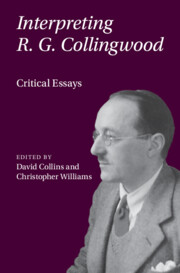Introduction
Published online by Cambridge University Press: 22 November 2024
Summary
In our Introduction we briefy discuss Collingwood’s life and philosophical career, as well as mentioning his work in other fields such as history and archaeology. We argue for the continued relevance of Collingwood’s thought for both twenty-first-century academic philosophy and for some of the central concerns of contemporary life beyond academia, such as scientism, the idolatry of technology, and the current political climate. The second part of the Introduction gives an overview of the fourteen chapters in the volume.
Keywords
Information
- Type
- Chapter
- Information
- Interpreting R. G. CollingwoodCritical Essays, pp. 1 - 12Publisher: Cambridge University PressPrint publication year: 2024
